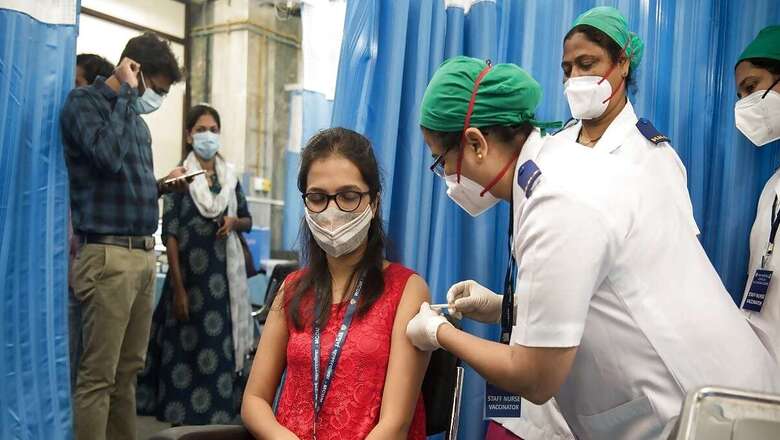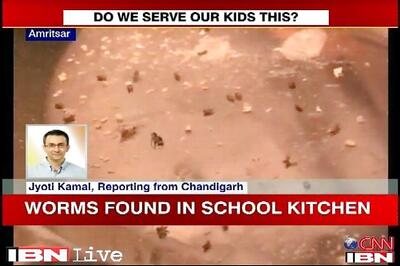
views
In the last 75 years, India’s progress as a nation has been both inspiring and impressive. India is the world’s fifth-largest growing economy today. India has also made its mark in the world arena of information, space and nuclear technology. While the Green and White Revolutions have made us self-reliant in food and milk production, our scientists, doctors, writers, singers, film directors, actors and sportspersons have been earning accolades across the globe.
India’s strides in the health sector have been equally remarkable. India’s life expectancy at birth stands at 69.7 years. For several years, Indian doctors and nurses have been one of the most sought-after human resources abroad. For over 60 years, India has been making vaccines for more than half the world. It now supplies close to 60 percent of the world’s generic drugs.
Vaccine PPPs during the Covid-19 pandemic
It is during the pandemic that India gained a definite advantage in the global health space, when it administered the first dose of the indigenous Covid-19 vaccine Covaxin, in January 2021. Mission COVID Suraksha, an endeavour to save lives, stood a unique public-private partnership (PPP) model. An inactivated virus-based vaccine — Covaxin — was developed by Bharat Biotech International Ltd, an Indian multinational, in collaboration with the government-led Indian Council of Medical Research (ICMR) and its reputed National Institute of Virology (NIV). To create this vaccine, Bharat Biotech used samples of the coronavirus isolated by NIV. This private-public partnership included funding, preclinical, clinical, laboratory and epidemiological studies, rolling reviews, advance purchase, at-risk manufacturing, expedited batch testing and roll out.
Within a year of the emergence of Covid, ICMR and Bharat Biotech’s vaccine was validated by the World Health Organisation (WHO) for emergency use. This was an incredible feat, a true testimony of Atmanirbhar Bharat (self-reliant India) as a completely indigenous vaccine was ready in less than eight months. Trial results for the vaccine showed an efficacy of 78 percent against mild, moderate, and severe Covid-19.
Clearly, this partnership evoked billions of hopes among Indians who, until then, were warned of impending doom in the early months of the pandemic. There were various challenges Indian scientists faced, including problems while conducting the country’s first seroprevalence survey with an indigenously made ELISA kit (again in PPP mode), during a lockdown. Yet, within a few months, along with Covishield, 96 countries recognised Covaxin as an effective shield against Covid-19.
India’s vaccine story demonstrated how an otherwise complex PPP model can deliver, based on mutual respect, transparency and accountability. The ICMR-Biotech partnership has substantially addressed critical health goals — equity and access to affordable care. The indigenous vaccine was administered to the rich and poor alike. Covaxin contributed tremendously to ‘har ghar dastak’ (knock at every door), the mega vaccination campaign. Covaxin was one of the cheapest vaccines purchased by the government. Bharat Biotech provided more than a million first doses for free.
i-DRONE: ICMR’s outreach for the Northeast
The pandemic opened up incredible opportunities for innovation in medicine as PPPs, some of which were led and backed by agencies like ICMR. ICMR partnered with start-up companies to develop drones to deliver Covid-19 vaccines to inaccessible regions for the first time in the world. Everyone everywhere had to be given this life-saving shot. ICMR’s Drone Response and Outreach for North East (i-DRONE) was launched in 2021 in Manipur, Nagaland and Andaman and Nicobar Islands. The inaugural flight of i-DRONE delivered 900 doses of Covid vaccine from the Bishnupur district in Manipur to a primary health centre located on an island in Loktak Lake. Besides vaccines, drones also delivered routine immunisation vaccines and antenatal care medicines. i-DRONE is the first example in entire South Asia of delivering vaccines by drone from land to island.
India was also able to provide the digital infrastructure – CoWIN – that traced, administered and confirmed vaccinations. Through CoWIN, citizens chose slots and centres for vaccination. It also operated like an intelligence network for vaccines, monitoring various cold chain points. More than 10 crore (100 million) Indians used the free telemedicine service, e-Sanjeevani. According to government data, around five lakh Indians met with a doctor online through e-Sanjeevani. Since it was launched in 2019, 57 percent of the beneficiaries have been women. Digital health initiatives like these have given the country a more transparent and people-centric system to address health goals.
Building effective countermeasures worldwide
Since the 1990s, the PPP model has been used to develop drugs for HIV/AIDS, malaria, and tuberculosis. Non-state actors have played a key role in contributing to universal healthcare. In recent years, ICMR, along with the state government of Madhya Pradesh, partnered with a pharma company to address the high transmission of malaria in the state. This collaboration has resulted in a substantial reduction of morbidity and mortality in the state.
At the G20 Health Working Group Meet held in Goa in April, delegates discussed the potential and possibilities of several PPPs that would ensure better countermeasures during health emergencies across the globe. Member countries agreed that PPPs were one of the effective methods of providing safe, effective, and quality medical solutions. The PPP model offers an effective mechanism for the government to efficiently utilise its existing medical infrastructure supported by the expertise of private partners.
India’s G20 presidency is a golden opportunity to offer leadership in collaborative research and public-private partnerships that can make medical treatment and emergency countermeasures more accessible and affordable. India’s Covid-19 experience has given it the right momentum to explore how some of the advanced member countries can work with low and medium-income member countries on sustainable PPP models for healthcare. As G20 President, India can make efforts in forging alliances between member countries to work on collaborative research based on the PPP model.
G20 is also an appropriate platform for India to evolve health solutions for the Global South – Africa, Latin America and parts of Asia – that has always been more impacted by multiple disease burdens associated with tuberculosis, HIV/AIDS and malaria. It is noticed that the Global North (North America, Europe, Russia, Japan, etc) has already moved away from the pandemic. In the past, India has shown effective leadership in addressing this North-South divide in healthcare. When India started manufacturing generic drugs for HIV, medication across the globe for HIV became more affordable. This single act has offered millions across the globe a chance to fight HIV/AIDS. With well-thought partnerships with the private sector, the Indian government can make an even deeper impact on the global health scenario.
The author is Immediate past Director General ICMR; Chief of Cardiothoracic Centre at AIIMS, New Delhi; President National Academy of Sciences, India. Views expressed are personal.




















Comments
0 comment